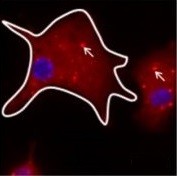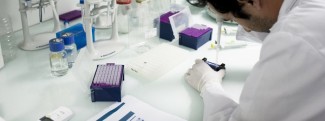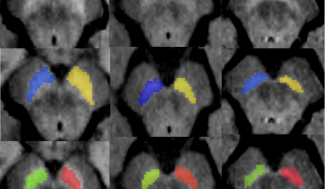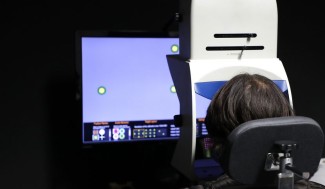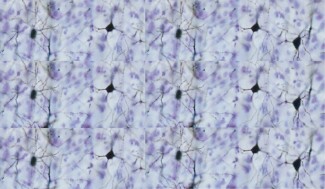Therapeutic management of Parkinson’s disease is multidisciplinary. The drug treatments used are aimed at restoring synaptic transmission between dopaminergic neurons.
Treatments for Parkinson's Disease
L-DOPA is a precursor capable of crossing the blood-brain barrier, the cell barrier responsible for protecting the brain.
Dopamine agonists are molecules that have the same effect as dopamine. They can also be sent subcutaneously (via apomorphine pump), making more regular, continuous and more balanced treatment possible for the patient. This makes it a treatment for forms of the disease that have longer progression times (‘second-line treatment’).
These treatments for Parkinson’s disease improve patients’ quality of life and delay a worsening of the motor symptoms of the disease. However, for some patients they can cause frequent or intense side effects.
Drug treatments: side effects
These side effects can include nausea, vomiting, low blood pressure, drowsiness, hallucinations, or an abnormal perception of reality and even compulsive drug use. Patients should consult their physician about any of these side effects.
The best known of these side effects is impulse control disorders, observed in 20% of patients taking dopaminergic agonists. These disorders manifest as an addiction to gambling, shopping, eating disorders, hypersexuality and/or risky behavior, for example.
Some of these disorders can be reversed by reducing treatment doses but may require complete discontinuation of the drug.
At Paris Brain Institute
A study coordinated by Professor Jean-Christophe Corvol, clinical research center director and team leader at Paris Brain Institute, involved a cohort of 400 patients recruited from all over France thanks to France’s clinical research network on Parkinson’s disease (NS-PARK/FCRIN).Patients were monitored for 5 years to assess their symptoms, adapt treatments and detect any emergence of behavioral disorders. This study shows that the onset of behavioral disorders increases in line with the duration of Parkinson’s disease.20% of the patients had these disorders when the study began, compared with 33% after 5 years. Of the patients who had no disorders at the start of the study, nearly 50% developed them within five years of monitoring.
These findings indicate that regular monitoring of patients undergoing treatment for Parkinson’s disease is essential. On this basis, the start-up AD SCIENTIAM, incubated at Paris Brain Institute, studies daily fluctuations in disease symptoms at patients’ homes under real-life conditions. The device is currently being tested on the NS-PARK cohort and aims to help implement therapies adapted by neurologists.
Treating the different symptoms of Parkinson’s disease
Late-onset gait disorders can be treated by Deep Brain Stimulations. In this therapy, an electrode is implanted in the target brain region, most commonly in the subthalamic nucleus or internal pallidum. The implantation is often performed under local anesthetic to adjust the electrode’s location for optimal symptom reduction. The electrode acts according to the same mechanism as a pace maker, delivering high-frequency electrical impulses at regular intervals. Stimulation of the thalamus can, for example, reduce resting tremor in 80% of cases.
Stimulation of the internal pallidum reduces abnormal movements in an average of 60% of patients. Stimulation of the subthalamic nucleus can reduce the motor symptoms characteristic of parkinsonian syndrome by 60%.
At Paris Brain Institute
Dr Carine Karachi and Brian Lau’s team at Paris Brain Institute is studying the anatomy of the subcortical region, with the ultimate aim of developing new therapies and applications for deep brain stimulation.
The joint Brain e-NOVATION laboratory at Paris Brain Institute has developed a therapeutic ‘Toap Run’ game that aims to improve balance and gait disorders in patients with Parkinson’s disease. In this interactive game, the patient has to perform movements that involve the whole body, and axial motor skills in particular, with lateral movements and movements

